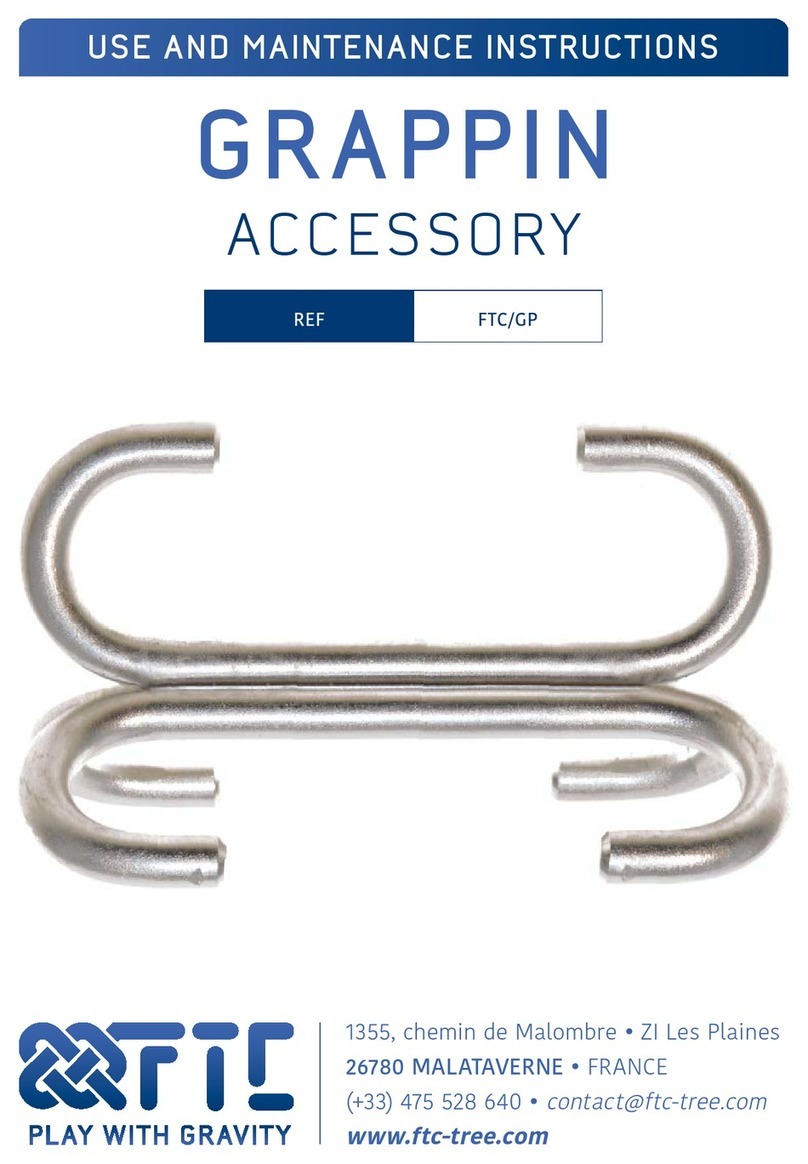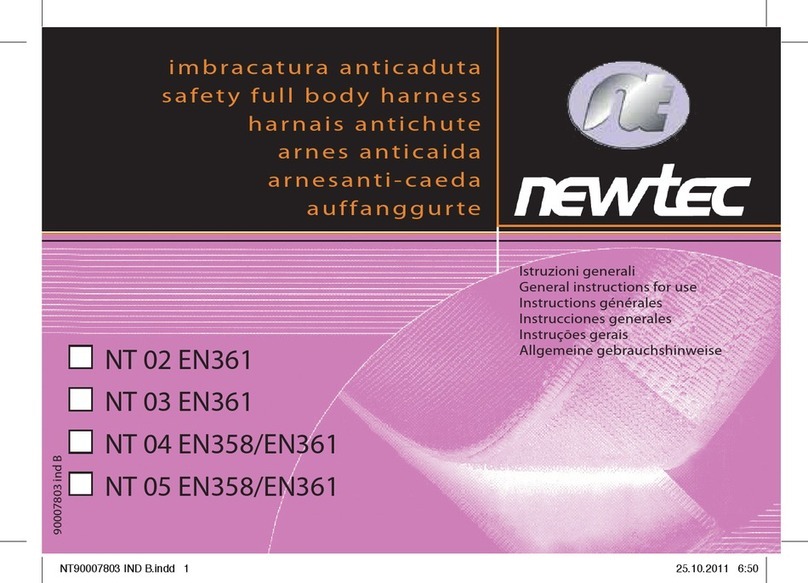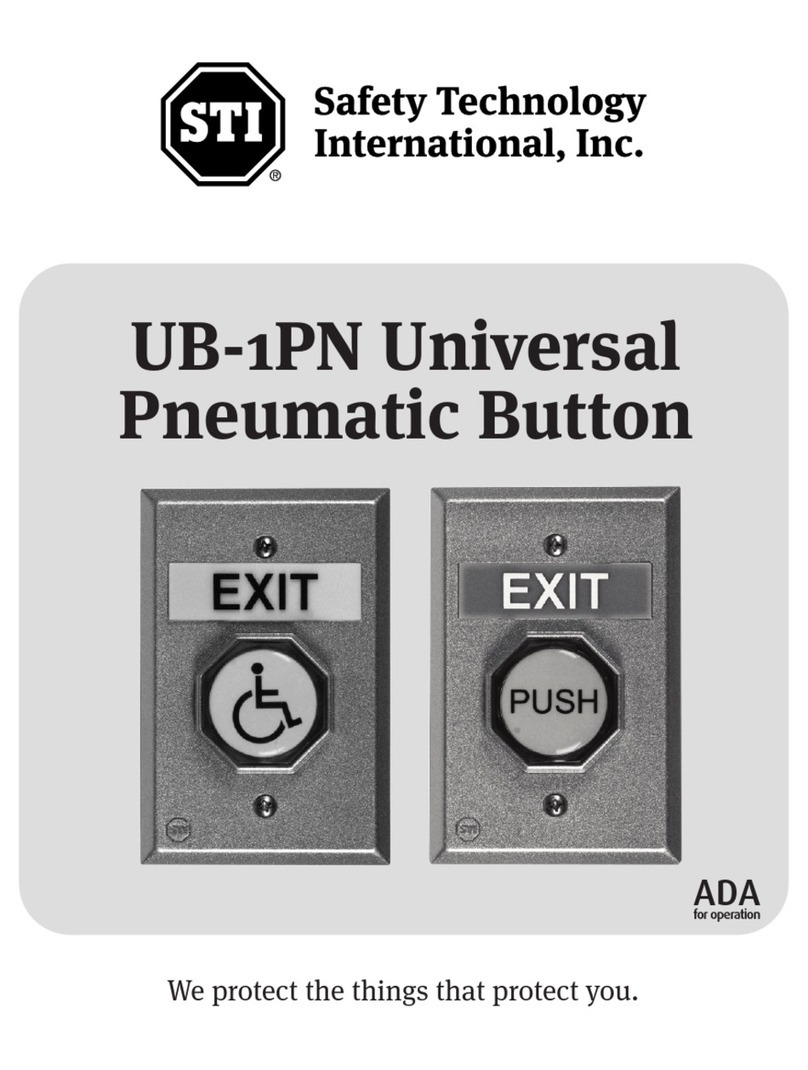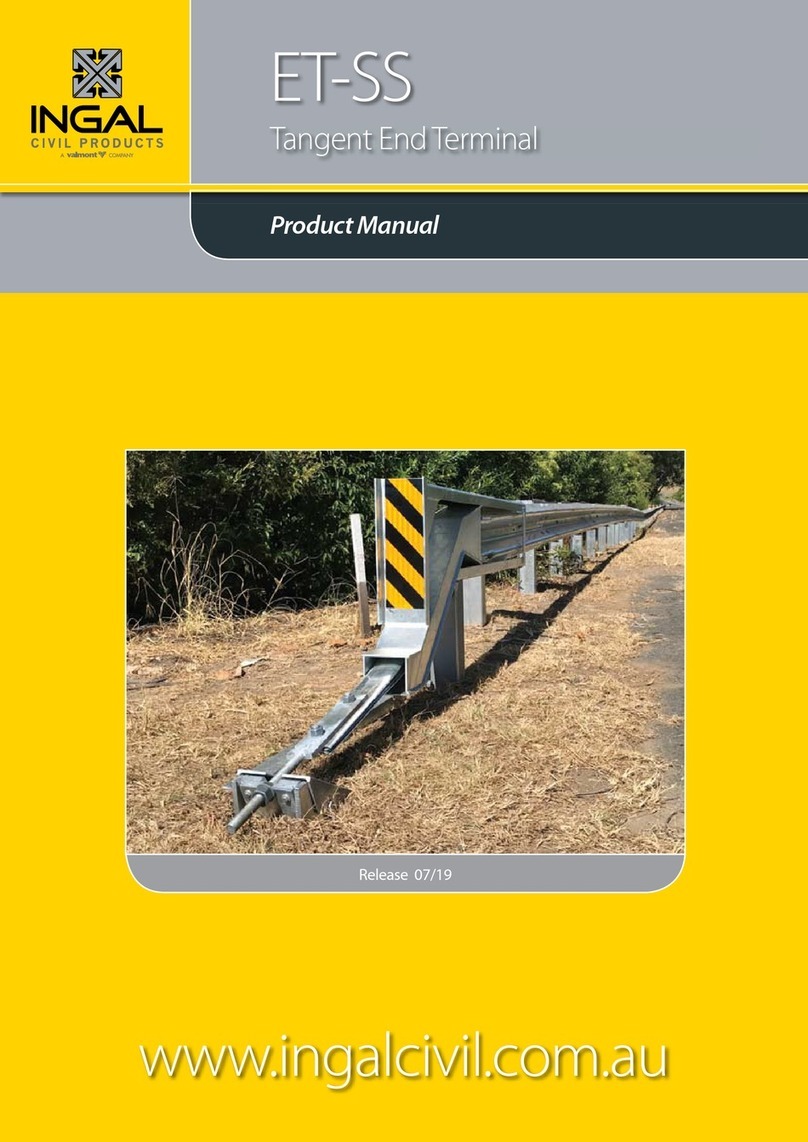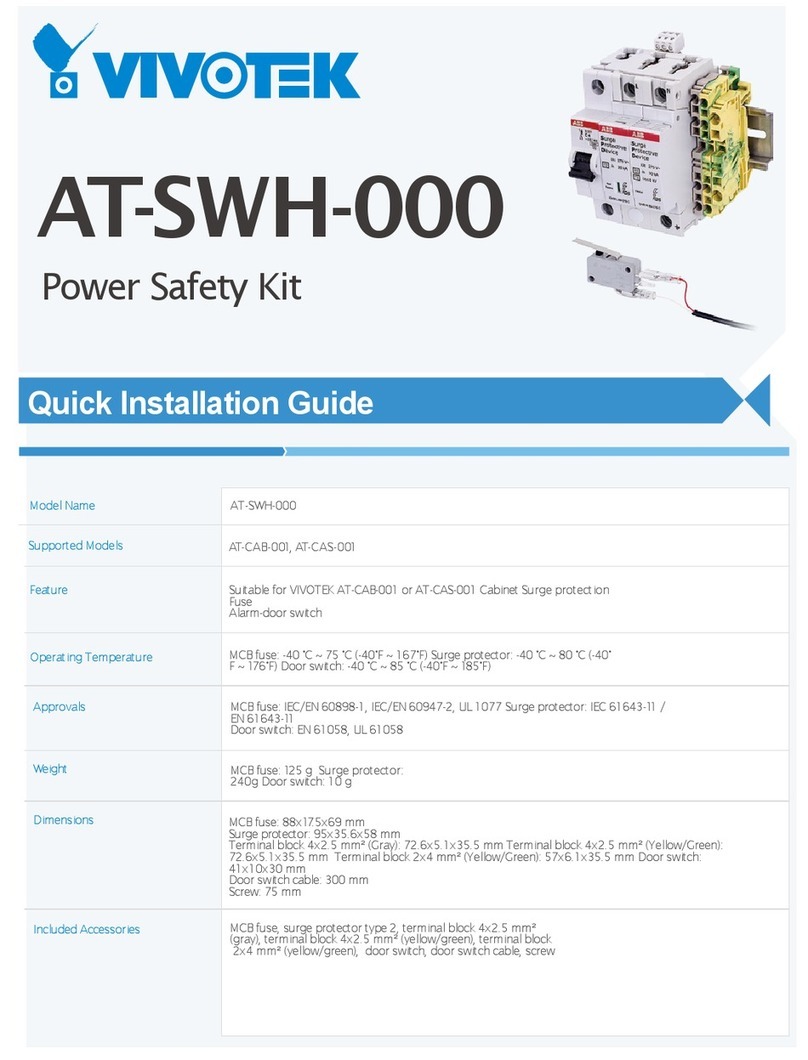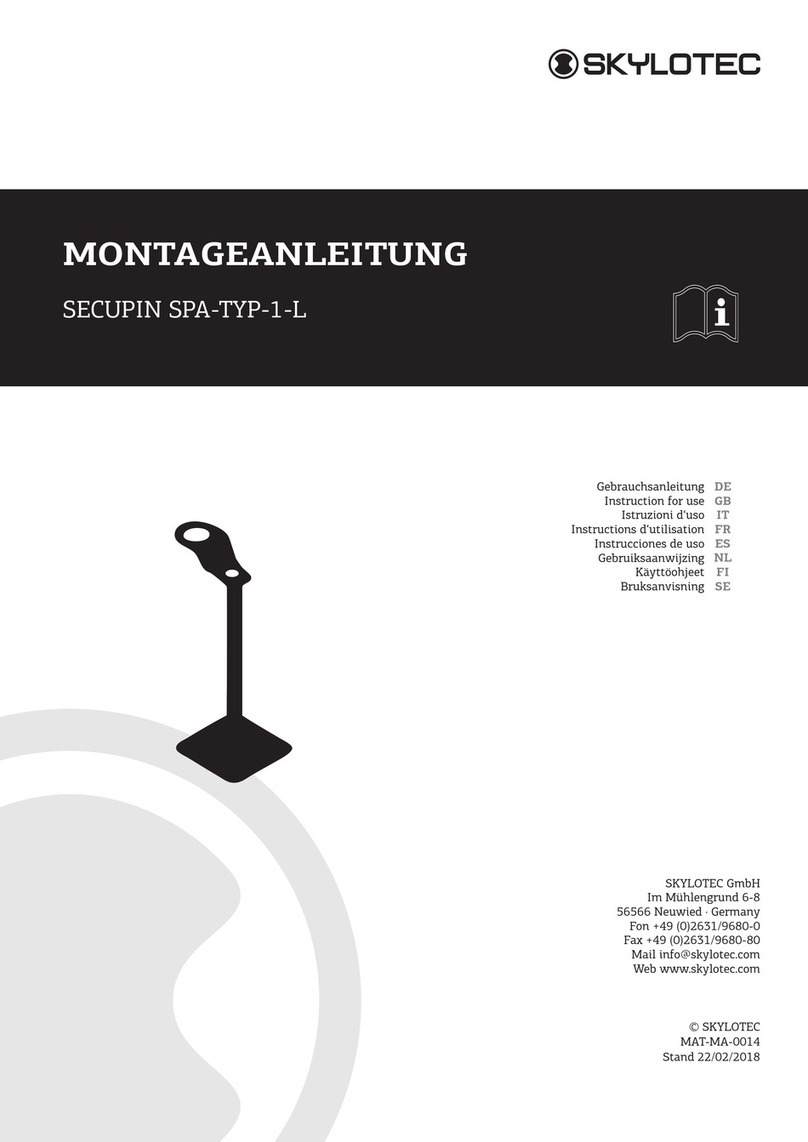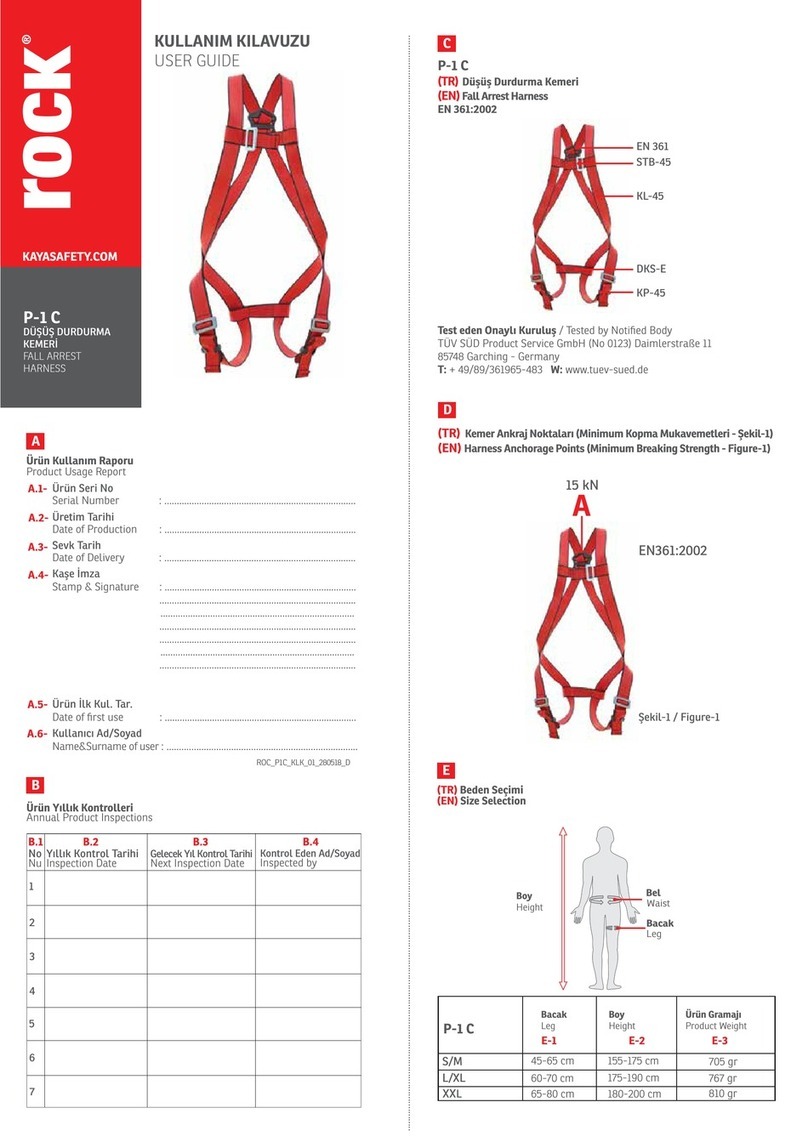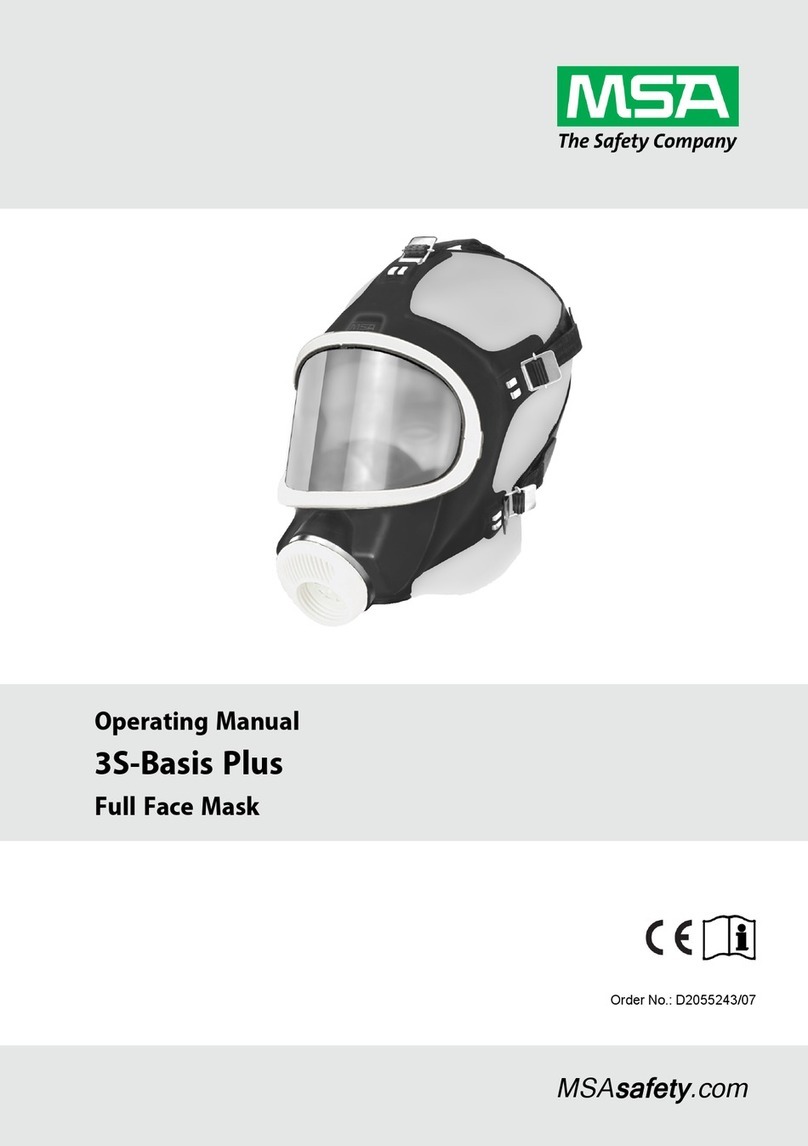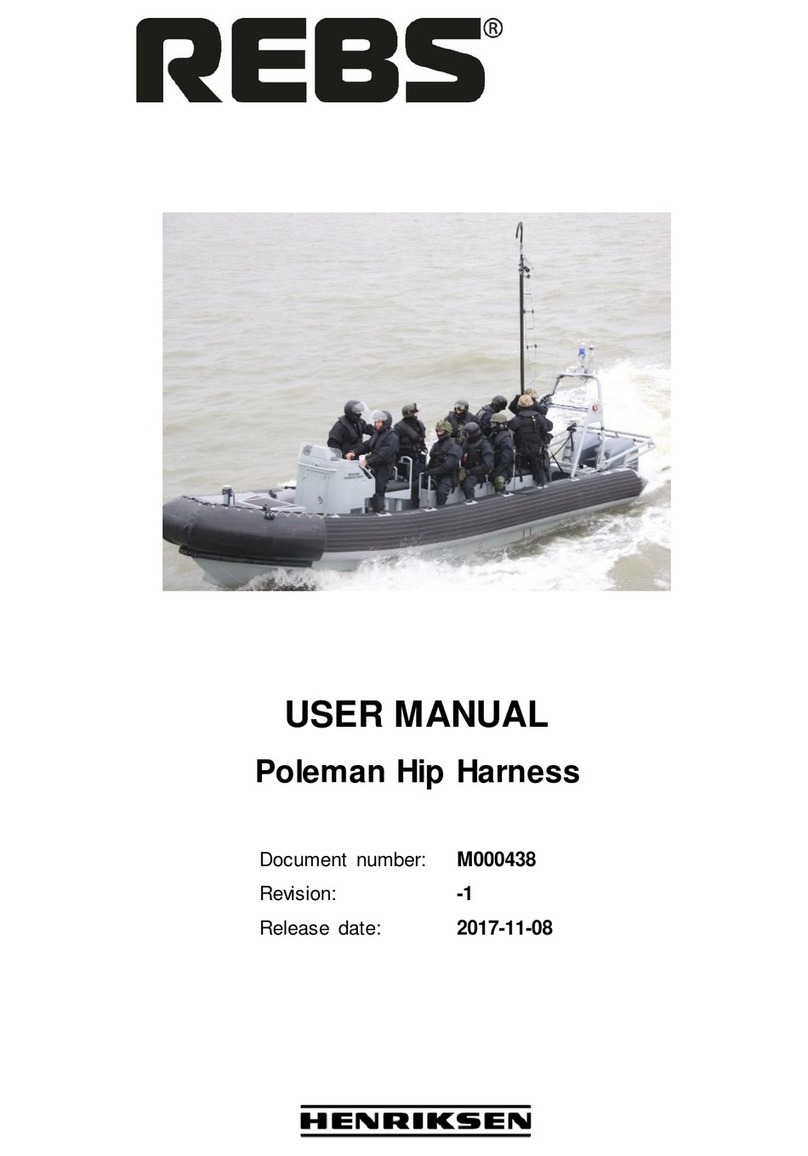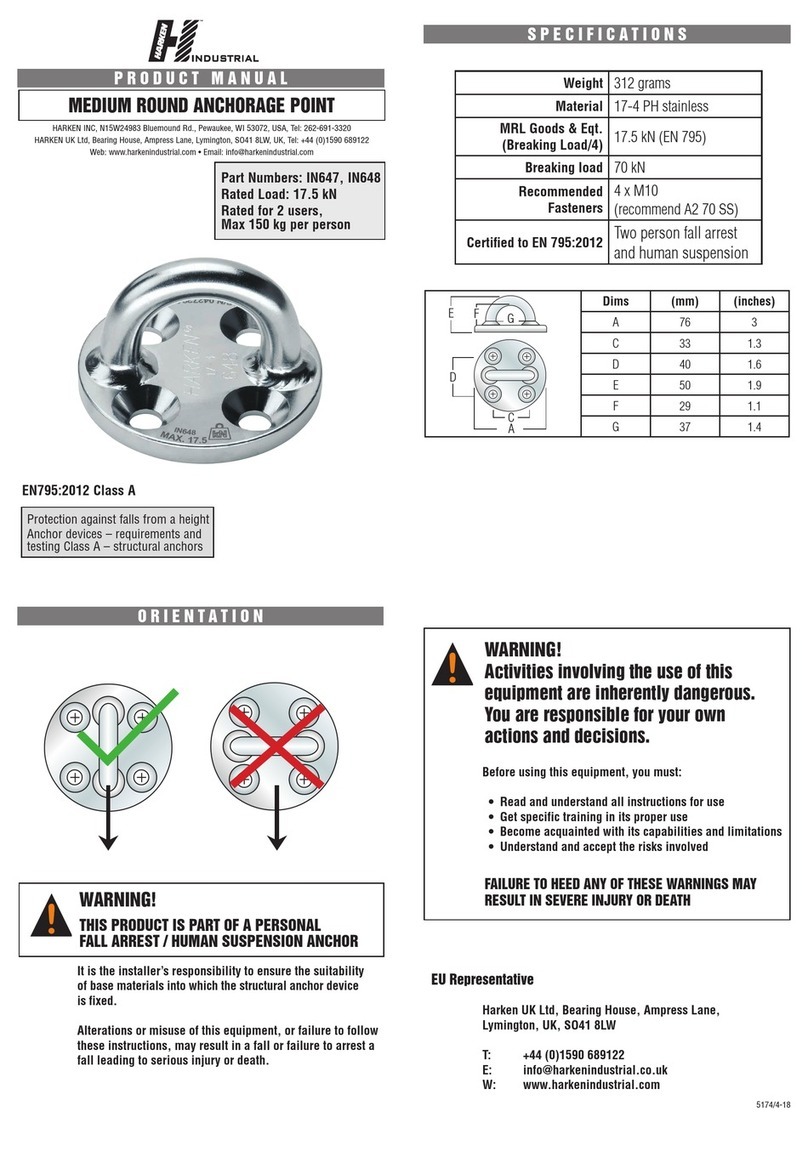Brano ZZ User manual

translation of the original instructions for use (also applies to special designs)
BRANO a.s., 747 41 Hradec nad Moravicí
the Czech Republic
tel.: +420/ 553 632 303
http://www.brano-zz.cz; http://www.brano.eu;
OPERATION MANUAL
SAFETY PRINCIPLES, OPERATION AND MAINTENANCE
FOR
GIRDER CLAMP
type ZZ
carrying capacities 2t; 3,2t; 5t
Modification with the eye ZZ-O
carrying capacities 2t; 3,2t; 5t and 10t,
design for potentially explosive atmospheres – NEXP
Read this Operation Manual carefully before using this product. This manual contains
important safety, operation, installation, and maintenance information on the product.
Make this manual available to all responsible persons.
Keep for further use!
Edition 4
th
A
PRIL
2022
Evidence number 1
-
52252
-
0
-
1

2
CONTENTS
1
DEFINITION ............................................................................................................ 3
2
INTENDED
PURPOSE ............................................................................................ 3
3
SAFETY
PRINCIPLES............................................................................................. 4
3.1 SAFETY SUMMARY......................................................................................... 4
3.2 SAFETY PRINCIPLES...................................................................................... 4
3.2.1 Prior to use..................................................................................................... 4
3.2.2 When in use ................................................................................................... 4
3.2.3 After use......................................................................................................... 4
3.2.4 Risk analysis .................................................................................................. 5
3.2.5 Maintenance .................................................................................................. 5
4
PACKING,
STORAGE
AND
MANIPULATION ......................................................... 5
4.1 PACKING.......................................................................................................... 5
4.2 STORAGE ........................................................................................................ 5
5
MAIN
TECHNICAL
PARAMETERS ......................................................................... 6
5.1 MATERIAL AND DESIGN................................................................................. 6
5.2 DATA ON PRODUCT ....................................................................................... 7
6
INSTALLATION
OF
THE
PRODUCT ....................................................................... 7
6.1 LOAD CARRYING STRUCTURE ..................................................................... 7
6.2 GIRDER DIMENSIONS .................................................................................... 7
6.3 MOUNTING AND DISMANTLING OF THE PRODUCT.................................... 7
6.3.1 Generally........................................................................................................ 7
6.3.2 Mounting ........................................................................................................ 7
6.3.3 Dismantling .................................................................................................... 8
6.4 TEST PRIOR TO USE ...................................................................................... 8
7
OPERATION............................................................................................................ 9
7.1 APPLICATION OF THE PRODUCT.................................................................. 9
7.2 SAFE WORKING ENVIRONMENT................................................................... 9
8
INSPECTION
OF
THE
PRODUCT..........................................................................10
8.1 INSPECTION .................................................................................................. 10
8.1.1 Inspection classifications.............................................................................. 10
8.1.2 Daily inspection............................................................................................ 10
8.1.3 Regular inspection ....................................................................................... 10
8.1.4 Products occasionally used.......................................................................... 10
8.1.5 Inspection record.......................................................................................... 11
8.2 INSPECTION PROCEDURE .......................................................................... 11
9
LUBRICATION........................................................................................................11
10
MAINTENANCE....................................................................................................12
10.1 SAFETY PRINCIPLES.................................................................................. 12
10.2 CHECK ......................................................................................................... 12
11
PUTTING
OUT
OF
THE
OPERATION
–
DISPOSAL.............................................12
12
RELATED
DOCUMENTATION.............................................................................12
13
FINAL
REQUIREMENTS
OF
THE
MANUFACTURER
TO
THE
CUSTOMER.......12

3
1 DEFINITION
! DANGER
Danger is used to indicate the presence of a hazard, which will
cause death or severe injury, if the operating staff does not avoid it.
! WARNING
Warning is used to indicate the possible presence of a hazard,
which could cause death or severe injury, if the operating staff
does not avoid it.
! CAUTION
Caution is used to indicate the possible presence of a hazard,
which can cause minor injury, if the operating staff does not avoid
it. Caution can also warn against dangerous practices.
Carrying capacity (Q): indicates maximum permitted mass (working load limit),
which a product is designed to be loaded during operations under conditions
specified in this manual.
2 INTENDED PURPOSE
2.1 The girder clamp of ZZ, modification ZZ-O and designed for use in potentially
explosive atmospheres ZZ(-O)-NEXP(hereinafter referred to as product or NEXP=
structurally identical product, differing in surface protection of selected parts, marking
plate material and documentation) of carrying capacities 2t; 3,2t; 5t and 10t is
designed for using as accessories hand operated. It is intended namely for easy and
quick suspending of hand operated lifting devices of the appropriate carrying capacity
onto girders or columns of I -, HEM - or T- profiles. They are suitable for using as
portable tool kit during assembling, repairing and other works as well. The mass of a
load must not exceed the nominal carrying capacity
2.2 The product has been designed in compliance with the requirements stipulated
by Directive 2006/42/EC of the European Parliament and of the Council, as amended
by the Czech technical regulation – Government Directive No. 176/2008 Coll., as
amended, and the requirements of the harmonized Czech technical standards ČSN
EN ISO 12100 and ČSN EN 13157+A1.
2.3 The product has been designed in compliance with the requirements stipulated
by Directive 2014/34/EU of the European Parliament and of the Council, as amended
by the Czech technical regulation – Government Directive No. 116/2016 Coll., as
amended. The product has been designed as IM2ExhIMb equipment pursuant to
ČSN EN ISO 80079-36:2016 and ČSN EN ISO 80079-37:2016. It complies with the
conditions stipulated for use in mining environments classed as “hazardous
atmospheric conditions 2” pursuant to ČSN EN 1127-2.
2.4 The product has been designed in compliance with the requirements stipulated
by Directive 2014/34/EU of the European Parliament and of the Council, as amended
by the Czech technical regulation – Government Directive No. 116/2016 Coll., as
amended. The product has been designed as II2GExhIICT6Gb,
II2DExhIIICT85°CDb equipment pursuant to ČSN EN ISO 80079-36:2016 and ČSN
EN ISO 80079-37:2016. It complies with the conditions stipulated for use in
environments classed as „zone 1 and zone 21“, “ zone 2 and zone 22“ pursuant to
ČSN EN 1127-1.
Note: Articles 2.3 and 2.4 apply to NEXP product design.

4
3 SAFETY PRINCIPLES
3.1
SAFETY
SUMMARY
Danger exists when using the product, particularly when the product is not being
used properly. Since an accident or serious injury could result, special safety
precautions must be observed in the course of work with the product during its
assembly and inspection.
! WARNING
NEVER load more than carrying capacity shown on the product nameplate.
ALWAYS make sure the load carrying structure will provide the adequate support
to handle fully loaded product and all other lifting operations.
ALWAYS follow all safety instructions concerning the lifting device suspended on
the product.
ALWAYS read operation manual and safety instructions.
3.2
SAFETY
PRINCIPLES
! WARNING
3.2.1 Prior to use
ALWAYS ensure physically fit, qualified and instructed persons older than 18 years
of age, familiarized with this manual and trained in safety conditions and
way of work, operate the product.
ALWAYS check the product before daily use according to the article 8.2.(1) „Daily
inspection“.
NEVER use damaged or worn out product.
NEVER use product without a visible marking of carrying capacity on its
nameplate.
NEVER use a product marked with the label „OUT OF OPERATION“.
ALWAYS consult with the manufacturer or his authorized representative using of
the product in extreme environment.
ALWAYS release the retaining screw.
ALWAYS check that the product is grounded through the ground terminal when
working in an explosive atmosphere
ALWAYS wipe off any dust before handling the product in an explosive atmosphere
3.2.2 When in use
ALWAYS make sure the lifting device (load) is properly suspended on the product.
NEVER load product by diagonal pull, apart from conditions specified in chap.
7.1.
NEVER allow impacts or vibrations effect on the product.
NEVER leave a suspended load without supervision.
3.2.3 After use
NEVER leave a load suspended.
ALWAYS ensure the product against incompetent use.

5
3.2.4 Risk analysis
The analysis of possible risks in light of design, operation and environment of the
product application is presented in freestanding document „Risk analysis“. This
document can be required in service centers.
3.2.5 Maintenance
ALWAYS enable qualified persons to inspect the product regularly.
ALWAYS ensure the screws and sliding parts were greased enough.
Only such interventions can be done when maintaining the product that are in
compliance with requirements of the manufacturer specified in the chapters 10 and
13 of this operation manual.
IT IS NOT PERMITTED to carry out repairs and maintenance in other way than
specified by the manufacturer. It concerns namely the forbiddance of carrying out
modifications on the product without any approval of the manufacturer.
4 PACKING, STORAGE AND MANIPULATION
4.1
PACKING
The product is supplied assembled and packed into cardboard boxes.
4.1.2 The following accompanying documentation is a part of the delivery:
a) Operation Manual
b) EC Declaration of Conformity
c) Certificates of Quality and Completeness and Guarantee Card.
c1) Guarantee period is stated in the Guarantee Card.
c2) The guarantee does not apply to defects caused by infringement of the
instructions stated in this Operation Manual and defects occurred owing
to improper use and unskilled intervention.
c3) The guarantee does not apply also to modifications on the product
without an approval of the manufacturer.
c4) A claim for defects in the product must be applied according to the
relevant provisions of the Commercial Code or the Civil Code, as
amended.
d) List of service centers (for the Czech and Slovak Republics only).
4.2
STORAGE
Store products in dry and clean stocks free of chemical influences and vapours.
(1) Always store a product without any suspended load.
(2) Remove clamp all dust, water or impurities from the girder.
(3) Lubricate screws.
(4) Store the product in a dry place.
(4) During further use follow instructions of the article 8.1.2 „Daily inspection“ or 8.1.4
„ Product occasionally used“.

6
5 MAIN TECHNICAL PARAMETERS
Type
Carrying
capacity
(t)
Main dimensions
(mm)
Weight
(kg)
A
max.
B
T
max.
B
1
max.
C
max.
D
E
min.
max.
F
min. J H
max.
With cross
beam
With
eye
ZZ
ZZ-O
2 360 270
26 220 220 20 108
155 35 57,5 61 2,9 3,1
3,2
415 300
32 235 285
34 145
190 55 81 85 6,5 7
5 38 142
187 52 88 93 8,4 9
10 - - - 120 109 - 15,5
ZZ with cross beam ZZ with eye
5.1
MATERIAL
AND
DESIGN
5.1.1 All parts of the product are made of steel; cap is made of plastic.
5.1.2 Materials inclinable to creation of an incendiary spark in terms of the annex No.
2 article 1.3.1 to the ministerial order No. 116/2016 of the Coll. of Laws and the
ČSN EN 1127-1 article 6.4.4, ČSN EN 1127-2 article 6.4.4 and ČSN EN ISO
80079-36 article 6.4.2.1 harmonized technical standards are not used.
5.1.3 Materials with dangerous effects of static electricity within the meaning of the
ČSN EN 1127-1 article 6.4.7, ČSN EN 1127-2 article 6.4.7, ČSN EN ISO 80079-
36 article 6.7 and ČSN CLC/TR 60079-32-1 are not used in the product.
Note: Articles 5.2.2 and 5.2.3 apply to NEXP product design
F
E
D
H
C
B
B
1
A
J
H
C
B
B
1
A

7
5.2
DATA
ON
PRODUCT
Every product is fitted with a label with specified data as follows:
Standard design:
N
EXP
p
roduct
d
esign
:
manufacturer designation
manufacturer designation
address of manufacturer
address of
manufacturer
type of product
type of product
lifting capacity
lifting capacity
serial number
serial nu
mber
year of production
year of production
CE marking
CE marking
sign of protection type (I IM2ExhIMb for group I,
II2G
Ex
hII
C
T
6Gb,
II2
D
Ex
h
I
II
C
T
85
°C
Db
for group
II)
6 INSTALLATION OF THE PRODUCT
Prior to installation, check carefully whether the product is not damaged.
The NEXP product must be installed in such a way as to prevent creeping charges.
Charging mechanisms stronger than manual friction must be avoided at the
installation site.
A NEXP product when used in a mine or other environment where the product could
collide with falling, flying… objects (rock, stones…) must be protected to minimize the
likelihood of a collision (sufficiently dimensioned cover, …).
6.1 LOAD CARRYING STRUCTURE
! WARNING
ALWAYS make sure the load carrying structure is firm enough to support the
weight of the load and product. The installation shall not be carried out onto
the structure, where the carrying capacity cannot be verified.
ALWAYS the user is responsible for the load carrying structure!
6.2 GIRDER DIMENSIONS
The product can be installed on a beam with flange, for example profile.: I, HEB, T....
6.3 MOUNTING AND DISMANTLING OF THE PRODUCT
6.3.1 Generally
! CAUTION
Be careful when mounting of the product to the girder and ensure appropriate
conditions for safety mounting according to the environment character (working
platform, auxiliary lifting device, etc.) to avoid endanger or injury of persons. Use
safety equipment when mounting the product in heights to avoid falls from height.
The user is responsible for creating conditions for mounting of the product and
performing its installation.
6.3.2 Mounting
The product can be mounted in an easy way to various kinds of I - or T- profiles
including welded ones. Maximum width of the I- or T-profile flanges for particular
carrying capacities (types) of the product is specified in the table of the chapter 5 –
see dimension "B".

8
Carry out mounting as follows:
1. Release the retaining screw (2) by
means of a hexagonal socket
wrench.
2. By means of the screw handle (1)
open arms to a distance allowing
the mounting of the product onto
the flange of the I-profile in the
place of the manipulation.
3. Tighten the arm screw handles
slightly to the flange of the girder.
4. By tightening of the retaining
screw (2) with hexagonal socket
wrench secure the bolt (1) against
releasing.
Such installed product is ready to
use.
When installing the product must not
be loaded.
GOOD -
arms sit on the vertical or
horizontal part of the girder flange.
WRONG - there is a clearance between
one or both arms and the profile flange.
6.3.3 Dismantling
Before dismantling of the product do not forget at first to release the retaining screw
(2). After releasing of the retaining screw you can open screw handle arms (1) and
take of the product from the carrying profile.
! WARNING
Never release the screw (1) of the loaded product.
6.4 TEST PRIOR TO USE
! CAUTION
(1) First look again through the previous articles of this manual and make sure all
steps were correctly done and all parts are safely mounted.
(2) Inspect visually load carrying structure or suspension elements, whether they are
without defects.
(3) Check manually and visually as well, whether the product is anchored in
accordance with the article 6.3.2.
2
1

9
7 OPERATION
7.1 APPLICATION OF THE PRODUCT
The product has been designed entirely for the installation on a beam with flange, for
example profile.: I, HEB, T.... It is destined for suspension of the chain blocks, lever
jacks or other lifting devices always of the appropriate carrying capacity.
Parts of the product intended for suspension are designed according to BRANO
hoists. When suspending the lifting device of other manufacturer or binding means,
the hook opening shall correspond to diameter of the crossbeam and eye of the hook
shall fit tightly on the crossbeam or suspension eye.
In special cases the product may be subject to “oblique stress“. This stress is not
recommended and results in a reduced loading capacity! The user is responsible for
the other parts of the system (supporting beam, binding materials, load...)!
Consult with the manufacturer other use of the product.
The product is destined for organizations and private persons as well.
When installing it the air protect the product against direct climatic influences
(shelter).
Since handling with heavy loads may involve unexpected danger, all the „Safety
instructions“ according to the chapter 3 must be followed.
! WARNING
NEVER suspend the lifting device of a greater carrying capacity than the
nominal carrying capacity of the product.
NEVER suspend a lifting device, the hook of which does not fit tightly on the
hinge pin.
NEVER use the product as a gripping device when lifting and manipulating beams.
This product is not designed for this purpose and there is a risk of improperly placed
stress on the product and the load slipping.
7.2 SAFE WORKING ENVIRONMENT
! WARNING
(1) The operating staff of the product must be demonstrably familiarized with this
operation manual, must observe applicable safety and hygienic regulations and
must be qualified for operation of this equipment.
(2) For binding of loads only tested binding means of an appropriate carrying
capacity shall be used.
(3) The operation staff shall check, whether the entire work area is safe and whether
there is a possibility of escaping from this area in case of endanger, before
starting to operate the product.

10
8 INSPECTION OF THE PRODUCT
8.1
INSPECTION
8.1.1 Inspection classifications
(1) Initial inspection: precedes first use. All new or repaired products shall be
inspected by a responsible qualified person to ensure the qualified fulfillment of
requirements of this operation manual.
(2) Inspection procedures of products operated regularly are generally divided into
two classifications based on the intervals at which should be performed. The intervals
depend on the condition of the critical components of the product and the degree of
the wear and tear, deterioration or malfunction. The two general classifications are
herein classed as daily and regular ones. The respective intervals are defined as
follows:
(a) Daily inspection: visual inspection carried out by the operating staff designated
by the user at the beginning of each application.
(b) Regular inspection: visual inspection carried out by the qualified person
designated by the user.
1) normal operation – once per year, determined by the user
2) heavy operation – twice per year
3) special or infrequent operation – according to the recommendation of the qualified
person at first usage and according to the directions of the qualified employees
(maintenance workers).
8.1.2 Daily inspection
Regarding parts such as those recommended in the section 8.2(1) „Daily inspection“
verify, whether the product is without any defect. Provide this inspection also during
operation in the interval between regular inspections. Qualified employees will
determine whether any defect or damage can constitute a hazard and whether more
detailed inspection is necessary.
8.1.3 Regular inspection
Complete inspections of the product perform as recommended regular inspections.
These inspections may be performed with the product in its normal location.
Recommended regular inspection specified in the section 8.2(2) shall be performed
under the supervision of qualified persons that will determine, whether it is necessary
to repair the product. These inspections shall include the requirements of the daily
inspection as well.
8.1.4 Products occasionally used
(1) The product, which has been idle for a period of one month or longer but less
than one year, remit to the inspection conforming to the requirements of the section
8.1.2 before follow-up putting it into operation.
(2) The product, which has been idle for a period of one year, remit to the inspection
conforming to the requirements of the section 8.1.3 before follow-up putting it into
operation.

11
8.1.5 Inspection record
Always keep the record of the performed tests, repairs, inspections and maintenance
of the product. Dated inspection records perform in time intervals specified in the
section 8.1.1 (2) (b) and such records store in an accessible place designated by the
user.
Defects found by the inspection or recorded during the operation must be announced
to the person responsible for safety and designated by the user.
8.2 INSPECTION PROCEDURE
(1) Daily inspection (carried out by the operating staff or a qualified person)
PART INSPECTION
METHOD
LIMIT/CRITERIA
FOR DISCARDING
REMEDY
1. Arms
Visually
Visible deformation
of arms; cracks in the
place of cavity.
Put out of the
operation and replace
by a new
product
.
2. Suspension
Visually
Clearance space
between arm and
beam.
Correction of
installation according
to the article 6.3.2.
(2) Regular procedure (carried out by a qualified person)
PART INSPECTION
METH
OD
LIMIT/CRITERIA
FOR DISCARD
REMEDY
1. Arms Visually
Visible deformation
of arms, cracks in the
place of cavity.
Put out of the
operation and replace
by a new product.
2. Screw
3. Securing screw
Visual check.
Turning of the
screw.
Difficult operation,
fouled and non
lubricated thread.
Clean and lubricate.
4. Name plate Visual check.
Carrying capacity is
illegible.
Repair or replace with
a new one
4. Hinge pin
5. Suspension eye
Visual check or
check by means of
the caliper.
.
Worn out cross bar or
suspension shackle by
more than 10%.
Put out of the
operation and replace
by a new product.
9 LUBRICATION
9.1 SCREW AND FRICTION SURFACES
Before the application of a new lubricant, remove the old one, clean parts by the help
of the acid solution and put the new lubricant. Use the lubricant prescribed by the
manufacturer.
Use grease: Universal lithium plastic lubricant, water resistant, usable in a minimum
range of working temperatures from -20°C to +50°C. For example A2, LV2EP. In
case of lower temperatures (down to -50°C) it is necessary to use a special lubricant
eg Optitemp LG2.
! WARNING
All lubricants (grease, oil) used in the NEXP version must have an ignition
temperature higher than 135°C. E.g. LV2EP, Optitemp LG2….

12
10 MAINTENANCE
The product does not require – except for a lubrication of the screw thread - any
special maintenance.
The manufacturer does not supply spare parts for the product. In case of any
damage or wear and tear of parts of the product it is necessary to put out the device
permanently of the operation and replace by a new one.
10.1 SAFETY PRINCIPLES
! WARNING
It is not permitted to perform repairs and maintenance in the other way than
prescribed by the manufacturer. It concerns especially the forbiddance of performing
modifications on the product without any approval of the manufacturer.
ALWAYS check the function of the product after performing maintenance.
ALWAYS mark the defective products or products under repair by an appropriate
sign (e.g.: „OUT OF OPERATION“).
NEVER carry out maintenance when a load is suspended on the product.
10.2 CHECK
Check all parts, whether they are suitable for further use.
1. Check, whether they are not worn out and have no scratches or cracks.
2. Check, whether threaded parts have no damaged thread.
3. Check, whether the hinge pin and suspension eye are not worn out or damaged.
11 PUTTING OUT OF THE OPERATION – DISPOSAL
The product does not contain any harmful substances; its parts are made of steel and cast
iron. After putting it out of operation, hand over it to a firm dealing with disposal of the waste
metal.
12 RELATED DOCUMENTATION
12.1 EC declaration of conformity
12.2 This Operation Manual was elaborated in accordance with the following
technical regulations, technical standards and national regulations:
•Ministerial order No.176/2008 of the Coll. of Law as amended (EP and Council
directive 2006/42/EC)
•Ministerial order No.116/2016 of the Coll. of Laws as amended (EP and Council
directive 2014/34/EU)
•ČSN EN ISO 12100
•ČSN EN 13157+A1
•ČSN EN 1127 – 1
•ČSN EN 1127 – 2
•ČSN EN ISO 80079-36
•ČSN EN ISO 80079-37
•Regulation of CBM (Czech Bureau of Mine) No.22/89 of the Coll. of Laws
•ČSN CLC/TR 60079-32-1.
13 FINAL REQUIREMENTS OF THE MANUFACTURER TO
THE CUSTOMER
Any changes of the product can be implemented only based on the approval of
the manufacturer.
When not observing this condition, the producer does not guarantee safety of his
product. In this case, any manufacturer’s guarantees do not apply to the product.
This manual suits for next models
1
Table of contents
